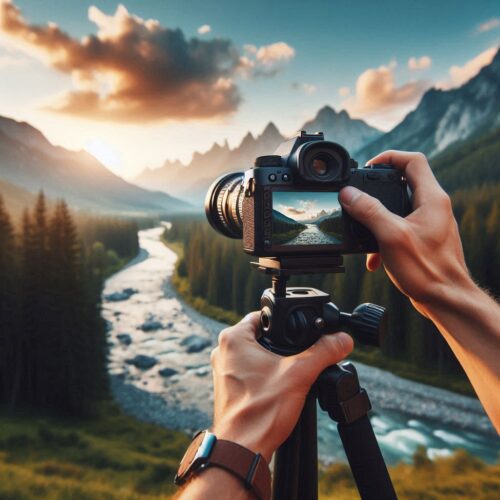To Know your camera is like knowing your best friend. Understanding the ins and outs can make all the difference. It’s easy to lean on auto mode when just starting and hoping for the best. But, getting familiar with manual settings will level up your game. However, I would recommend having White Balance (WB) in auto mode, I have always used auto as I found changes can be achieved in post-production software like Adobe Lightroom/Classic.
Camera settings are like the secret sauce. Ignoring them can leave you with lackluster images. Experiment with ISO, shutter speed, and aperture. Those three together are your golden trio. Each setting impacts the other, so play around and see what works best for your style and subject matter.
It’s tempting to blame the camera for a bad shot, but the truth is, that mastering the basics starts with you. Invest the time into learning your tools; soon enough, you’ll notice a significant improvement in your shots.
Composition Errors to Avoid
The composition makes or breaks a photograph. Understanding techniques like the Rule of Thirds can transform your images. This simple grid system helps you place your subject off-center, creating more balanced and engaging pictures.
Have you ever noticed that centering your subject sometimes makes a shot look boring? That’s a common rookie mistake. Try experimenting with different compositional styles like leading lines or framing. These techniques guide the viewer’s eye to your subject in a natural, effortless way.
Cluttered backgrounds ruin good pictures. They distract and take focus away from your subject. Look for ways to simplify. Whether it’s moving around to find a cleaner angle or adjusting your depth of field to blur out distractions, clean backgrounds make a world of difference.
Always remember, that what isn’t in the frame is just as important as what is. Framing your shot thoughtfully eliminates unnecessary elements, ensuring the viewer’s attention goes exactly where you want it.
Managing Lighting Challenges
Light is the backbone of photography. Getting it right can elevate an ordinary photo to an extraordinary one. One common mistake beginners make is not paying enough attention to the exposure. Photos can end up overexposed (too bright) or underexposed (too dark), losing crucial details.
The exposure triangle, made up of ISO, shutter speed, and aperture, is your guide here. Balancing these three elements ensures your photo is neither too bright nor too dark. Don’t be afraid to shoot in manual mode and adjust these settings till you get the perfect exposure.
Many newbies overlook how powerful natural light can be. Artificial lighting has its place, but natural light often gives a more authentic feel. Early morning or late afternoon light, known as the golden hour, is ideal for capturing stunning photos with soft, warm tones.
Fluorescent and incandescent lights can cause color casts that mess with your photo’s natural look. When you can, opt for natural light or correct the white balance settings in your camera to handle these challenges.
Post-Processing Pitfalls
Post-processing is where good photos become great. But it’s a double-edged sword. Beginners often fall into the trap of over-editing, making images look unreal. Subtlety in editing is key. Enhance what’s already there without overdoing it.
Cropping is another overlooked tool. It’s not just about trimming edges; it’s about reframing the picture to make a stronger impact. A good crop can turn an average photo into a compelling image by focusing on the subject and removing distractions.
The histogram might look like a foreign language at first, but it’s your best friend for balancing your images. This chart helps you see if you have a well-exposed photo, showing the distribution of light and dark areas. Learning to read it can drastically improve your editing game.
Finally, you’ve got to back up your work. There’s nothing worse than losing all your files to a hard drive crash. Develop a reliable backup system, whether it’s external drives, cloud storage, or both. This small step can save you big headaches down the line.


Hey, Robbie! Great tips here!
It’s easy to overlook the basics when starting out, but this post really nails down how important it is to know your camera and settings. I’ve definitely been guilty of sticking to auto mode too long, and learning to play around with ISO and aperture really can open up a new world.
The advice on composition and lighting is super helpful too—sometimes it’s the small adjustments that make the biggest difference. And yes, over-editing is such a trap! Keeping it subtle always seems to work best.
Thanks for the helpful reminders!
Hi Nikolay! Thanks so much for your thoughtful comment. It’s great to hear that you’ve found the post helpful—getting comfortable with your camera and stepping out of auto mode does make a world of difference. Playing around with ISO and aperture opens up so many creative possibilities, and it’s amazing how much you can achieve with just a few small adjustments in composition and lighting. There are priority modes to consider, ISO, Aperture, and speed.
I agree with you on the editing front—less is often more. Keeping it subtle allows the natural beauty of the shot to shine through. Happy, to hear that you’re finding that balance too.
All the best
Robbie